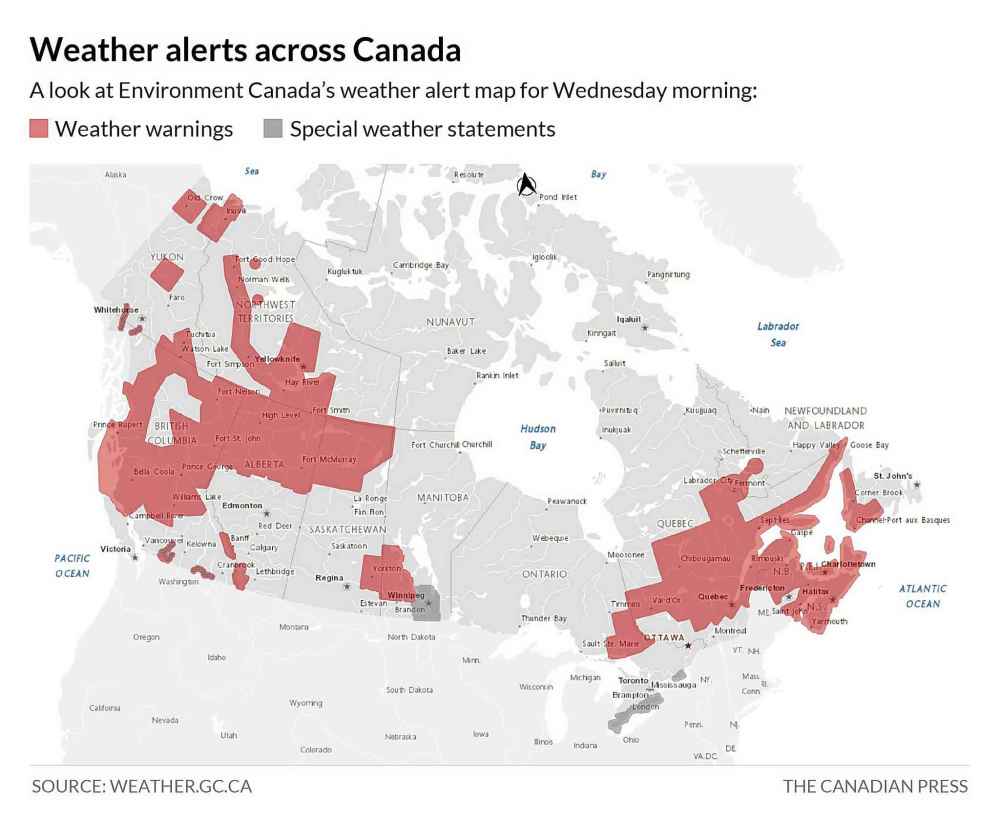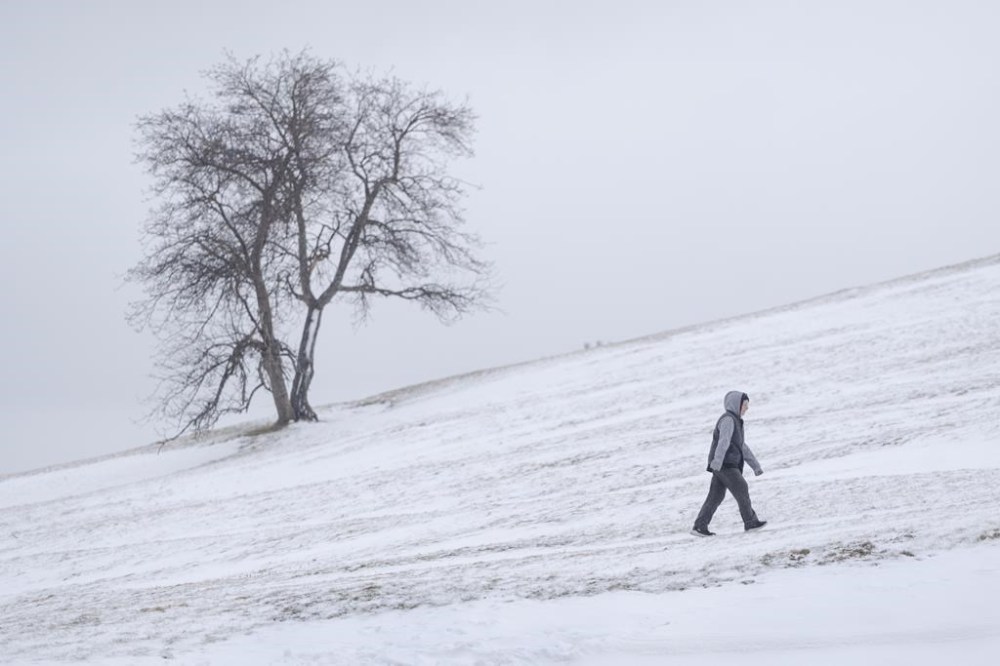A winter storm brings wind, snow, rain to Atlantic Canada
Advertisement
Read this article for free:
or
Already have an account? Log in here »
To continue reading, please subscribe:
Monthly Digital Subscription
$0 for the first 4 weeks*
- Enjoy unlimited reading on winnipegfreepress.com
- Read the E-Edition, our digital replica newspaper
- Access News Break, our award-winning app
- Play interactive puzzles
*No charge for 4 weeks then price increases to the regular rate of $19.00 plus GST every four weeks. Offer available to new and qualified returning subscribers only. Cancel any time.
Monthly Digital Subscription
$4.75/week*
- Enjoy unlimited reading on winnipegfreepress.com
- Read the E-Edition, our digital replica newspaper
- Access News Break, our award-winning app
- Play interactive puzzles
*Billed as $19 plus GST every four weeks. Cancel any time.
To continue reading, please subscribe:
Add Free Press access to your Brandon Sun subscription for only an additional
$1 for the first 4 weeks*
*Your next subscription payment will increase by $1.00 and you will be charged $16.99 plus GST for four weeks. After four weeks, your payment will increase to $23.99 plus GST every four weeks.
Read unlimited articles for free today:
or
Already have an account? Log in here »
Hey there, time traveller!
This article was published 10/01/2024 (666 days ago), so information in it may no longer be current.
HALIFAX – A large winter storm was forecast to continue making its way through Atlantic Canada Wednesday evening, bringing with it a combination of snow, rain and high winds.
Environment Canada meteorologist Ian Hubbard said the entire region would be feeling the effects of the storm that was expected to track into the Gulf of St. Lawrence overnight.
“This is a very large storm in terms of the size and the areas that it’s covering … so everybody’s getting their own little dose of weather from this,” Hubbard said in an interview Wednesday afternoon.

Environment Canada issued a series of weather warnings for the Atlantic provinces. Classes were cancelled across New Brunswick and Prince Edward Island, and dozens of schools were closed in western Nova Scotia. Power outages were affecting much of the region as of late Wednesday afternoon.
As of 4:45 p.m., 6,500 Nova Scotia Power customers were in the dark, along with 3,175 Maritime Electric customers in P.E.I. and about 1,500 NB Power customers in New Brunswick.
Nova Scotia was forecast to see a combination of strong winds, heavy rain and high waves in some areas. Hubbard said low-lying areas could experience localized flooding.
In New Brunswick, heavy rain, strong winds and up to 25 centimetres of snow were forecast. The weather agency also warned of potential storm surges in the Campbelltown and eastern Restigouche County areas, with waves as high as five metres breaking on the shore at high tide.
As of 3:30 p.m. Wednesday, peak winds had hit between 95 and 100 kilometres per hour in many parts of Nova Scotia and northern P.E.I. Winds higher than 120 km/h were recorded by Confederation Bridge officials Wednesday afternoon, prompting a closure of the bridge that links P.E.I. to New Brunswick.
Wind warnings and a blowing snow advisory were in effect for the south and southwestern parts of Newfoundland, where gusts were expected to reach up to 120 km/h. A number of health clinics across the province closed Wednesday because of the weather.
Hubbard recommended that residents across the region keep a close eye on their local forecast and avoid unnecessary travel.
“I’d suggest people may not want to be out on the roads … you’re going to want to secure loose objects in place so they don’t end up elsewhere,” he said.

The meteorologist added that the heavy rain in the forecast could bring flooding to parts of the region that typically experience flooding.
The weather was forecast to calm down by Thursday, but Hubbard said another round of windy conditions was expected by the weekend.
“We’re not gonna have very much of a break, unfortunately, we are getting another weather system Saturday,” he said.
This report by The Canadian Press was first published Jan. 10, 2024.





